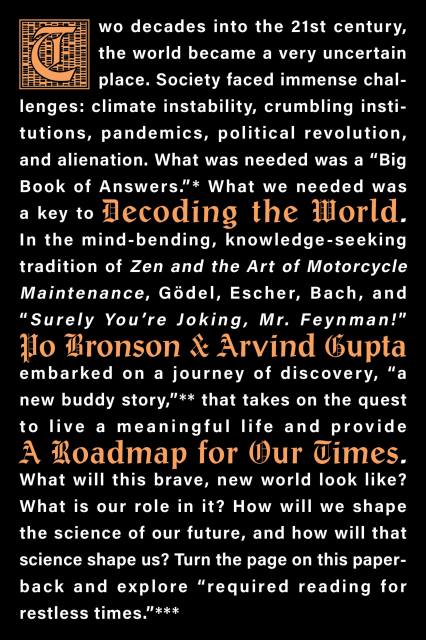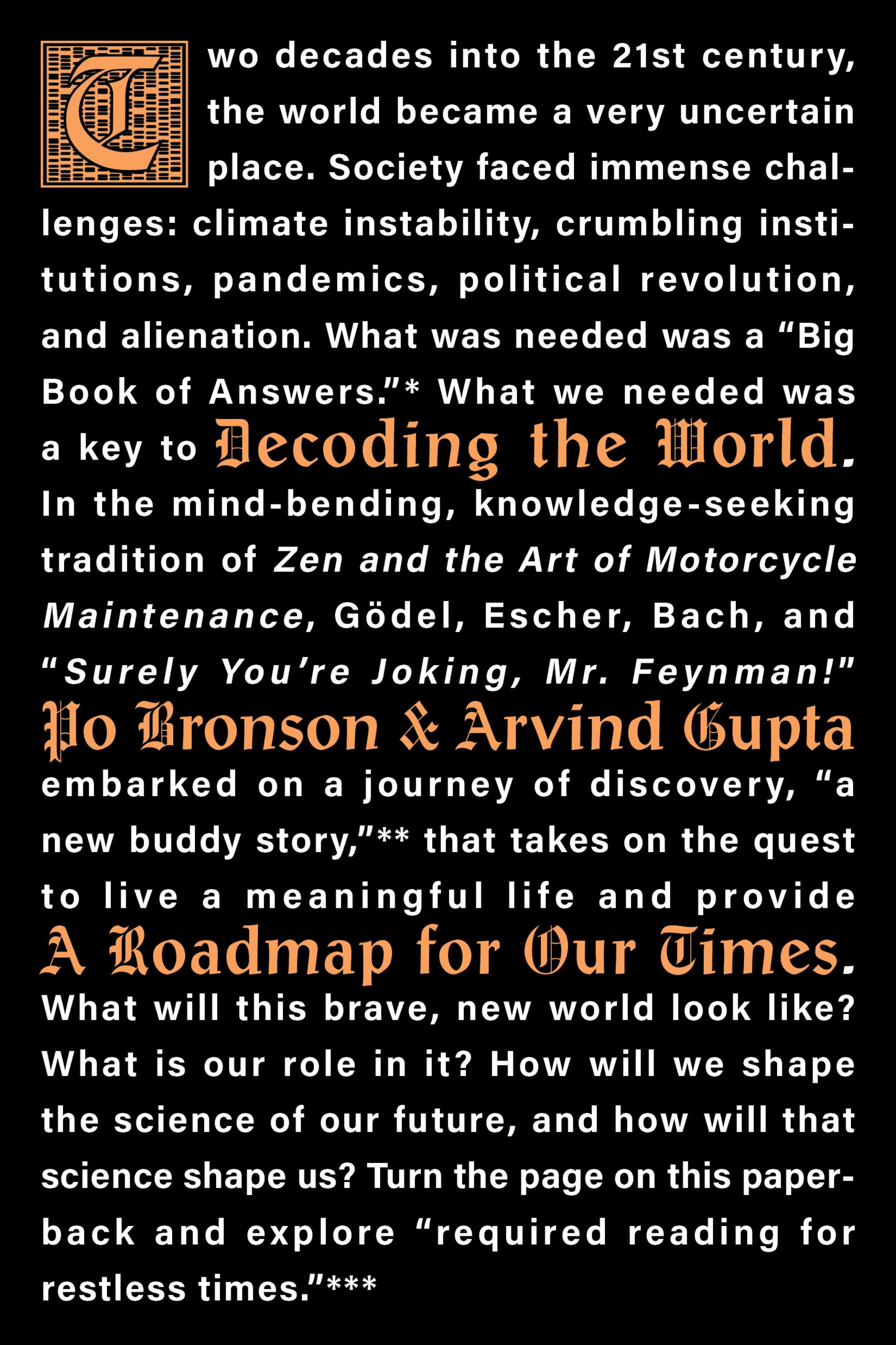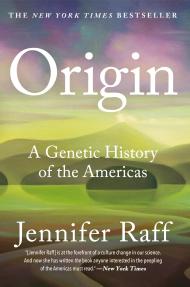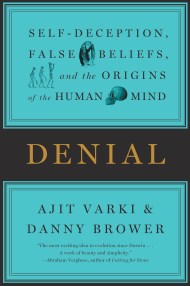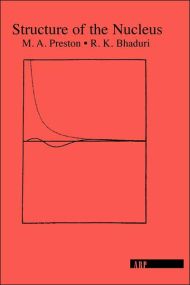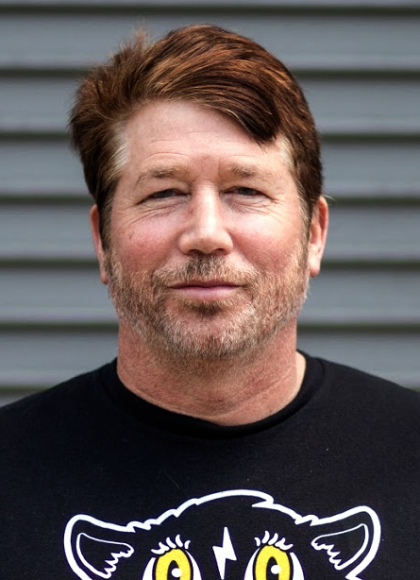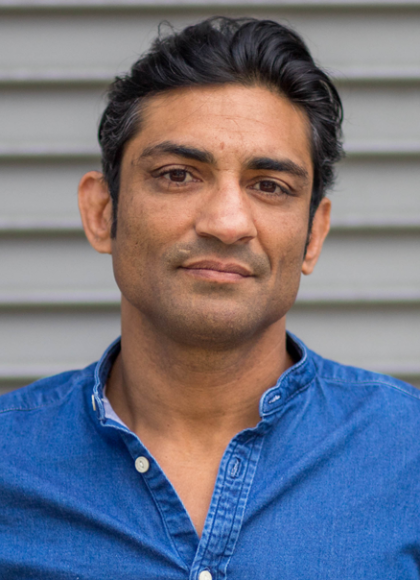Promotion
Use code MOM24 for 20% off site wide + free shipping over $45
Decoding the World
A Roadmap for the Questioner
Contributors
By Po Bronson
By Arvind Gupta
Formats and Prices
Price
$11.99Price
$15.99 CADFormat
Format:
- ebook $11.99 $15.99 CAD
- Hardcover $30.00 $38.00 CAD
- Audiobook Download (Unabridged)
- Trade Paperback $17.99 $22.99 CAD
This item is a preorder. Your payment method will be charged immediately, and the product is expected to ship on or around October 6, 2020. This date is subject to change due to shipping delays beyond our control.
Also available from:
Decoding the World is a buddy adventure about the quest to live meaningfully in a world with such uncertainty. It starts with Po Bronson coming to IndieBio.
Arvind Gupta created IndieBio as a laboratory for early biotech startups trying to solve major world problems. Glaciers melting. Dying bees. Infertility. Cancer. Ocean plastic. Pandemics.
Arvind is the fearless one, a radical experimentalist. Po is the studious detective, patiently synthesizing clues others have missed. Their styles mix and create a quadratic speedup of creativity. Yin and Yang crystallized.
As they travel around the world, finding scientists to join their cause, the authors bring their firsthand experience to the great mysteries that haunt our future. Natural resource depletion. Job-taking robots. China’s global influence.
Arvind feels he needs to leave IndieBio to help startups do more than just get started. But as his departure draws near, he struggles to leave the sanctum he created. While Po has to prove he can keep the “indie” in IndieBio after Arvind is gone.
After looking through their lens, you’ll never see the world the same.
Genre:
-
"Like being a fly on the wall of the world's most interesting dinner party. Spectral, scary, stupefying, and yet strangely optimistic, DECODING THE WORLD is a journey through the weirdness and wondrousness of the natural world, and our precarious place within it. Required reading for restless times."James Nestor, New York Timesbestselling author of Breath: The New Science of a Lost Art
-
"YES! This is it. The Big Book of Answers you've been looking for. It's kind and funny. It explores and explains. Think of it as a guide book to the human animal for the 21st century."Noah Hawley, creator of Fargo
-
"Fascinating and terrifying. Gupta and Bronson bring biotech to the people, demystifying the anxieties of our fraught and fragile times."Fatima Bhutto, author of The Shadow of the Crescent Moon
-
"DECODING THE WORLD is an absolute delight. Bronson and Gupta have tackled complex, often daunting scientific topics and made them come alive for the reader in a way that amuses and enthralls, while also delivering some urgent calls to action. This is one of the most creative, entertaining, and inspiring looks into the future that you will ever find."Ashlee Vance, New York Times bestselling author of Elon Musk: Tesla, SpaceX, and the Quest for a Fantastic Future
-
"Buddy stories have led to number of Hollywood classics, ranging from The Odd Couple to 48 Hours. In DECODING THE WORLD, Po Bronson and Arvind Gupta take us several hundred miles up the California coast for a new buddy story that uncovers the biotech startup world. In these tales of friendship and exploration, Bronson and Gupta show us how biological engineering is emerging as a dominant technology of this century, one that will help change our world for the better."p.p1 {margin: 0.0px 0.0px 0.0px 0.0px; line-height: 17.0px; font: 14.7px Helvetica; color: #262524; -webkit-text-stroke: #262524; background-color: #ffffff}span.s1 {font-kerning: none}James J. Collins, MIT and Harvard bioengineer
-
"These two headed off to explore knowledge, invention, art, superstition, maybe even salvation and have emerged with what looks like the planet's first atlas of apocalypse avoidance."Jack Hitt, author of Bunch of Amateurs
-
"In DECODING THE WORLD, [the authors deliver]...bold visions for the future...Their experiences fuel interesting discussions about pressing issues and trailblazing science. [And] ask us to rethink everything from government sugar subsidies to the ways we test for disease."San Francisco Chronicle
- On Sale
- Oct 6, 2020
- Page Count
- 352 pages
- Publisher
- Twelve
- ISBN-13
- 9781538734322
Newsletter Signup
By clicking ‘Sign Up,’ I acknowledge that I have read and agree to Hachette Book Group’s Privacy Policy and Terms of Use
